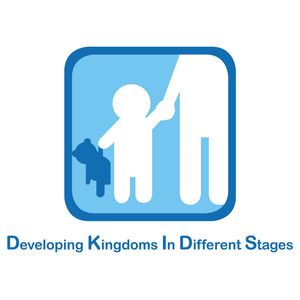Thriving Through Change – How Developing K.I.D.S. went from Serving up to 196 Youth Each Week to Reaching an Audience of 35,000
On an ordinary day, you might have found Developing K.I.D.S (Kingdoms In Different Stages) programming running in local community buildings or schools. Youth from ages 5-18 would gather after school for a variety of supportive activities—homework help, social-emotional lessons, science and art activities, help completing essays for college applications, peer discussions, and healthy meals. Participants helped out at meal times and shared the responsibility of caring for Mr. Benny, an adorable, fluffy rabbit housed at one of the sites. You would have heard a lot of laughter and earnest conversation between youth and the staff.
In the face of COVID-19, Kim Johnson, Founder, President, and CEO of Developing K.I.D.S. and her staff faced the challenge of translating a deeply engaged, face-to-face program model into one that could be delivered remotely and equitably. The process began with reflection on mission and organizational priorities. From there, Kim considered how to shift in ways that kept everyone safe and leveraged the strength of her team. Once a framework that supported high-quality youth development practices was identified, involving the team and stakeholders was key.
“Staff, parents and youth weighed in and co-created the design. We continuously engage youth and parents in facilitation, brainstorming, reflection and evaluation in a virtual format,” says Kim Johnson. In addition, the organization immediately reached out to funders and major donors, communicating their plans for pivoting and foreseeable challenges.
To create an inclusive program, Developing K.I.D.S. created a virtual model using a variety of platforms that are most accessible for youth and families without internet service at home. Kim and her Program Director, Tenecha (Toy) Bland, also considered the talents and skills of each team member. “This was a time to build on those talents and strengths while providing space for the team to grow in new areas. Communication, patience and scaffolding have been key components of this process,” Kim relates.
The attention to staff development has paid off. Toy observes, ”They are all emerging as greater leaders. They are taking greater initiative to provide better programming. They are compassionate about the families that we serve. They check on us to make sure that we are OK during all of this.”
Each day, Developing K.I.D.S. posts a number of engaging videos, opportunities for homework help, and check-in sessions on their Facebook page and other social media outlets. They maintain a weekly calendar, as well as provide reminders of upcoming sessions to keep youth and families aware of available programming. Here’s a STEM video on creating invisible ink with Youth Services Coordinator, Tyrone Bean. You’ll find links to the website and social media at the end of this story, if you’d like to see more.
Even with the exponential growth in their social media audience—their posts now have a reach of over 35,000–maintaining youth and caregiver relationships continues to be a priority. Once in-person programming was suspended, staff immediately began weekly youth/caregiver check-ins by phone, Facetime, video conferencing, or even TikTok. As needs have been identified, and processes refined, the team has become even more intentional with outreach. Now, each youth has an individual action plan in place. Developing K.I.D.S. is also committed to the emotional well-being of staff. They take their team’s emotional needs into consideration through individual check-ins, twice weekly staff video conferences, and self-care time requests.
To support program quality and team growth, Toy leads professional development and training for her staff virtually. She says, “We still use the Youth Program Quality Assessment (YPQA) tool. I pull one item from the YPQA and provide training on that during our team meetings. It’s a lot of listening for me and making program adjustments to stay innovative.” This practice, along with stakeholder feedback, enables the organization to utilize the Plan, Assess, Improve model to continuously improve program quality.
While it has not been without challenge, Developing K.I.D.S. has worked diligently to create high-quality youth development programming that can be equitably accessed through social media, to maintain youth and caregiver relationships, and to develop staff engagement and leadership—while caring for the social-emotional needs of all involved.










